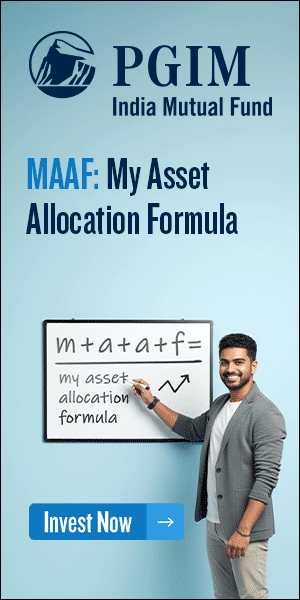Value Versus Growth Investing

Value Investing: What Is It
Value investing is the strategy of investing in undervalued stocks. Generally, the current market price of a stock is compared with its intrinsic value to decide whether it is under-valued or overvalued. If the current market price is below the intrinsic value, the stock is considered under-valued. The intrinsic value represents the earning potential of the company. Higher intrinsic value than market price of the stock is considered to be an anomaly. It is expected to be eliminated in long term when the company achieves its earning potential, and consequently when the market price converges to its intrinsic value. The popular methods of selecting under-valued stocks is comparing price-to-earning, price-to-book value, price-to-cash flow ratios etc. of the stock with its peers, sector or market as a whole, with lower ratios indicating under-valued stock. For example, Ashok Leyland was a value stock in Feb’14 when its valuation ratios were lower than its peers in the sector.
The concept of value investing was introduced by Benjamin Graham and David Dodd in 1934 through their book "Security Analysis". It was further developed by Benjamin Graham through his another book "The Intelligent Investor" published in 1949. In this, he advocated the concept of "margin of safety" which calls for a cautious approach to investing. He encouraged picking the stocks trading below their tangible book value as a safeguard to adverse market movements.
The process of picking stocks for value investing is based on the fundamental analysis of the financial statements and other information about the company. The estimation of intrinsic value of a company stock involves judgments on the part of investors/analysts, and different approaches lead to different values. Here comes the importance of margin of safety. If the stock is bought at well below the estimated intrinsic value, the error in judgment might well be covered in case of adverse market or price movement.
Growth Investing: What Is It
Growth investing is the strategy of investing in stocks having current or expected earnings growth rates higher than that of their sector or the market as a whole. Investors here look for companies having high quality management, strong financial performance, and bright future outlook for capital appreciation. The growth companies may look overvalued compared to peers in terms of high price to earnings ratio, high price to book value ratio etc. because of appreciation of price at relatively higher rate. For example, Titan Company Ltd. has been a growth stock most of the time as its earnings growth has been generally higher than its peers, and its valuation ratios have also been higher than the sector.
The concept of growth investing was introduced by Thomas Rowe Price, Jr. He believed that superior returns could be earned by investing in well-managed companies in fertile fields whose earnings and dividends could be expected to grow faster than inflation and the overall economy. His investment management philosophy was based on investment discipline, process consistency, and fundamental analysis. As per John Train, the author of "The Money Matters", Price looked for following characteristics in growth companies:
- Superior research to develop products and markets.
- A lack of cut-throat competition.
- A comparative immunity from government regulation.
- Low total labour costs, but well-paid employees.
- At least 10% return on invested capital, sustained high profit margins, and a superior growth of earning per share.
Obviously, growth investors look at both quantitative and qualitative aspects of a company, with the expectation of the former yielding into enhancement of the latter. Traditionally, the companies having the potential to double the price of their stocks in 5 years are considered growth companies. This translates into compounded annual growth rate of around 15%. Growth stocks are generally high beta stocks with high volatility. So, in an upward trending market, they out-perform the market. But, in the market recession, they perform worse than market.
Growth vs. Value Investing: Which One Is Better (Indian Context)
In many research papers of finance over the years, it has been proved that the value investment outperforms the growth investment over long term. To examine empirically as to which approach is better in Indian context, we take the example of two indices: MSCI India Growth and MSCI India Value in local currency as the representative indices of growth stocks and value stocks respectively for Indian equity market. The respective values are of year-ends starting from 31st December, 1996 to 31st December, 2013. The period encompasses total 17 years including bear runs from 2000-02 and 2007-09, and bull runs pre- and post- these two bear runs. We examine the performances of these two indices in order to come to conclusive evidence about of superiority of one over the other. The following table shows the data of the two indices over the period.

Following observations could be drawn from the Table 1.
- Growth index has given negative returns in 4 out of 17 years, with negligible positive returns in other two years. The average of those negative returns was -31.90%.
- Value index has given negative returns in 5 out of 17 years with almost zero return in another year. The average of those negative returns was -30.15%.
- In 5 out of 17 years, growth index gave returns over 40%. The average return of those 5 years was 68.46%.
- In 6 out of 17 years, value index gave returns over 40%. The average return of those 6 years was 64.97%.
- In 4 out of the 5 years when growth index gave returns over 40%, the value index outperformed it.
- In 5 out of the 6 years when value index gave returns over 40%, it outperformed the growth index.
- In 3 out of the 5 years when growth index gave returns over 40%, the returns of preceding year were negative or negligible.
- In only 2 out of the 6 years when value index gave returns over 40%, the returns of the preceding year were negative or negligible. So, value index had less advantage of low base effect than the growth index.
- For the period from 31st December, 1999 to 31st December, 2001 when the dot.com boom busted in US, the growth index gave CAGR of -22.36% while the value index gave CAGR of -17.43%. So, the value index’s slide was less compared to the growth index.
- During the bull phase from 31st December, 2002 to 31st December, 2007, the CAGR of growth index was 35.84%, while that of value index was 47.64%. So, the value index outperformed the growth index during this phase.
- During 2008, the slide of growth index was more than the value index, while during 2009, recovery of latter was better than former.
- During the period 31st December, 2007 to 31st December, 2009 largely covering the Global Financial Crisis, the CAGR of growth index was -15.63% while that of value index was -2.94%. So, in this period too, value index outperformed the Growth index.
- From 31st December, 2004 to 31st December, 2009, value index outperformed Growth index continuously of 5 years on yearly returns basis.
- Post 2009, Growth index has generally outperformed the value index.
- In 8 out of the 17 years under consideration, value index outperformed the Growth index.
- For the total period under consideration, CAGR of growth index was 13.32% while that of value index was 10.27%. So, based upon CAGR, growth index outperformed the value index.
- Considering the CAGR of risk-free asset at 7%, the Sharpe Ratios of the growth index and the value index come out to be 0.1485 and 0.0794 respectively. So, on a risk adjusted return basis also, the growth index outperformed the value index over the period.
Conclusion of the Study of Indian Scenario
Based upon the observations of the study, we can conclude that:
- When markets are moving downward, the decline in the value stocks is less than that of the growth stocks.
- When the market reaches its bottom, the prices of most of the stocks are near to or lower than their intrinsic value. But after the market bottoms out and starts moving upwards, the value stocks outperform the growth stocks.
- When the markets are not trending strongly in any direction as evident post 2009, growth stocks generally outperform the value stocks.
- Over long term, growth stocks generally outperform the value stocks. This conclusion may not hold when data of longer period is taken, or when there is no outlier in the returns of the growth index as there was for 31st December, 1999 (124.62%). Also, this conclusion is contrary to long established belief that in long term, value stocks outperform growth stocks.
- On a risk adjusted return basis (Sharpe Ratio), growth stocks decisively outperform the value stocks over long term.
Growth vs. Value Investing: Which One Is Better (US Context)
Earlier we compared the growth and value investment strategies in Indian context. As the developing markets are considered to have structural and operational inefficiencies, we now consider the most developed and sophisticated financial market of world, viz. US market. We take the value and growth style indices of Russell 3000 index which represents about 98% of investable US equity market. The year-end data of both indices is taken from 1995 to 2013. The following table shows the data of the two indices over the period.

Following observations could be drawn from the Table 2.
- The growth index has given negative return in 4 out of 18 years, with negligible return in another year. The average of those negative returns was -27.72%.
- The value index has given negative return in 5 out of 18 years. The average of those negative returns was -13.49%.
- In 7 out of 18 years, the growth index has given returns over 20%, with the average return of these 7 years being 30.14%.
- In 3 out of 18 years, the value index has given returns over 20%, with the average return of these 3 years being 29.73%.
- In only one of the 7 years when the growth index gave returns over 20%, the value index outperformed it.
- In 2 out of 3 years when the value index gave returns over 20%, the growth index outperformed it.
- In only 2 out of 7 years when the growth index gave returns over 20%, the returns of previous year were negative or negligible.
- In only 1 out of 3 years when the value index gave returns over 20%, the return of previous year was negligible or negative. So, although none of the indices had any significant advantage of low base effect for returns over 20%, though percentage-wise, value index benefitted more.
- For the period from 31st December, 1999 to 31st December, 2002 when the dot.com boom busted in US, the growth index gave CAGR of -23.94% while the value index gave CAGR of -6.30%. So, the value index’s slide was less compared to the growth index. Similar situation was found in Indian scenario.
- During the bull phase from 31st December, 2002 to 31st December, 2007, the CAGR of growth index was 11.23%, while that of value index was 11.92%. So, the value index outperformed the growth index during this phase. Similar situation was observed in Indian scenario.
- During 2008, the slide of growth index was slightly more than value index, but during 2009 the recovery of the former was more pronounced than the latter.
- During the period 31st December, 2007 to 31st December, 2009 largely covering the Global Financial Crisis, the CAGR of growth index was -9.60% while that of value index was -15.19%. So in this period, under-performance of growth index was less than the value index. This position is contrary to the Indian scenario where the value index out-performed the growth index in this period.
- From 29th December, 2000 to 29th December, 2006, value index outperformed growth index continuously on yearly returns basis with exception of year 2003.
- Post 2008, the growth index generally out-performed the value index.
- In 9 out of 18 years, the value index out-performed the growth index.
- For the total period under consideration, CAGR of growth index was 6.14% while that of value index was 6.47%. So, based upon CAGR, value index slightly outperformed the growth index. This is opposite to the Indian scenario when the growth index out-performed the value index on CAGR basis.
- Considering the CAGR at 3% of 10-year US government bonds, the Sharpe Ratios of the growth index and the value index come out to be 0.1399 and 0.2063 respectively. So, on a risk adjusted return basis, the value index outperformed the growth index over the period. This is again contrary to Indian scenario.
Conclusion of the Study of US Scenario
Based upon the observations of the study, we can conclude that:
- When markets are moving downward, the decline in the value stocks is less than that of the growth stocks.
- When the market bottoms out after the bear phase and starts moving up, the recovery of the value stocks is usually better than the growth stocks.
- When the markets are not trending strongly in any direction as evident post 2009, growth stocks generally outperform the value stocks.
- Over long run, the value stocks generally out-perform the growth stocks. This conclusion is in line with the long established belief.
- On a risk adjusted return basis (Sharpe Ratio), value stocks decisively outperform the growth stocks over long term.
Growth at a Reasonable Price (GARP): A Blend of Both Approaches
It is an investment approach seeking to combine both the value and growth strategies for stock selection. Popularized by Peter Lynch, the Fidelity fund manager, it seeks to choose the companies having consistent earnings growth above the peers and/or market, but still having comparatively low valuations. Thus, the approach avoids the pitfalls of both value and growth investing by not going solely on basis of past and current earnings growth, but also taking into considerations the potential left for future earnings growth potential.
Ideally, the GARP stock is picked up on the basis of price/earnings to growth (PEG) ratio, which is the ratio of P/E to expected earnings growth over next several years. A stock having PEG ratio equal to or less than 1 generally comes under GARP stock.
Conclusion
In developed financial markets the value stocks have generally outperformed the growth stocks over long term. In developing markets, situation may vary depending upon the direction and valuation efficiency of the market. This may be attributed to the relatively high growth rates of developing economies providing impetus to the growth stocks. The more prudent approach would be to apply the GARP model in stock selection. It would help investors choosing the stocks having good returns history and future potential, and at the same time avoiding the over-valued stocks.
Disclaimer: This communication is only meant for qualified and certified Financial Advisors. This document should not be construed as an invitation/recommendation to purchase or sell a security or take any position in the market. While Pulse Labs has taken every care to ensure that the information/data is accurate and complete, we do not take any responsibility for any errors and omissions.
Queries
-
What is the benefit of mutual fund STP
Aug 29, 2019
-
How much to invest to meet target amount of Rs 2 Crores
Aug 26, 2019
-
Can I achieve my financial goals with my current mutual fund investments
Aug 24, 2019
-
Can you tell me return of various indices
Aug 19, 2019
-
What would be the post tax return on different investments
Aug 18, 2019
-
Which Principal Mutual Fund scheme will be suitable for my retirement corpus
Aug 16, 2019
-
What is the minimum holding period for availing NCD interest
Aug 4, 2019
Top Performing Mutual Funds
Recommended Reading
Fund News
-
Zerodha Mutual Fund launches Zerodha Nifty Short Duration G Sec Index Fund
Dec 26, 2025 by Advisorkhoj Team
-
Groww Mutual Fund launches Groww Nifty Chemicals ETF
Dec 26, 2025 by Advisorkhoj Team
-
DSP Mutual Fund launches DSP Nifty Next 50 ETF
Dec 19, 2025 by Advisorkhoj Team
-
DSP Mutual Fund launches DSP Nifty 500 Index Fund
Dec 19, 2025 by Advisorkhoj Team
-
Kotak Mahindra Mutual Fund launches Kotak Nifty Next 50 ETF
Dec 18, 2025 by Advisorkhoj Team














